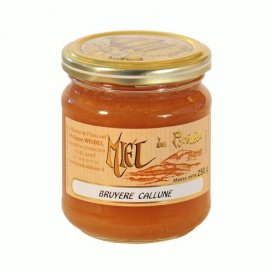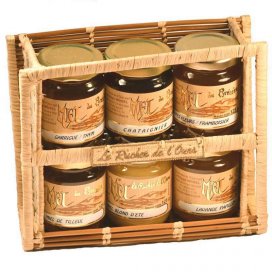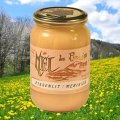Heather Honey
Heather Honey is a favourite amongst honey connoisseurs. With its strong taste, Heather Honey stands out from other honeys. It is as strong as Chesnut honey and particularly sought after by northern Europeans. A large percentage of the Heather Honey produced in France is exported despite irregular harvest conditions. The gelatinous consistency makes it particularly difficult to extract. It requires the use of a needle to stir the honey before it is extracted.
• Appearance : Heather Honey is a dark, brownish-red in its liquid form. It is known for its thixotropic (gelatinous) consistency. The crystallisation process is very slow.
• Smell : The smell is intense and long-lasting.
• Taste : The strong taste leaves a trail of bitterness in the back of the mouth.
Like White Heather Honey, Heather Honey's pronounced characteristics make it a favourite amongst honey connoisseurs.
As the Heather blooms late in the summer, it is almost the only flower available to the honeybees at that time. Double extraction insures the pureness of Heather Honey.
First, all traces of other honeys are extracted before inserting the needles that stir the thick Heather Honey readying it for removal. The result of the second round of extraction is an almost pure form of this unique honey.
Common Heather Honey has an unusually high in protein (1% of the dry matter) and amylase (an enzyme that aids in breaking down starch into sugar).
Some trace elements that can be found in Common Heather Honey are potassium, iron, sulphur, manganese, boron, and barium.
It’s said to be helpful for people with kidney problems and those who are recovering from illness.
The Common Heather is a member of the Ericaceae family. The low-growing bush reaches 20 to 50 cm in height and can live for 40 years. The tiny, indeciduous leaves grow in four lines.
read more about Heather
Goût doux et puissant à la fois de bonbon au miel et de fleurs, avec un soupçon de goût de caramel, miam miam !




























